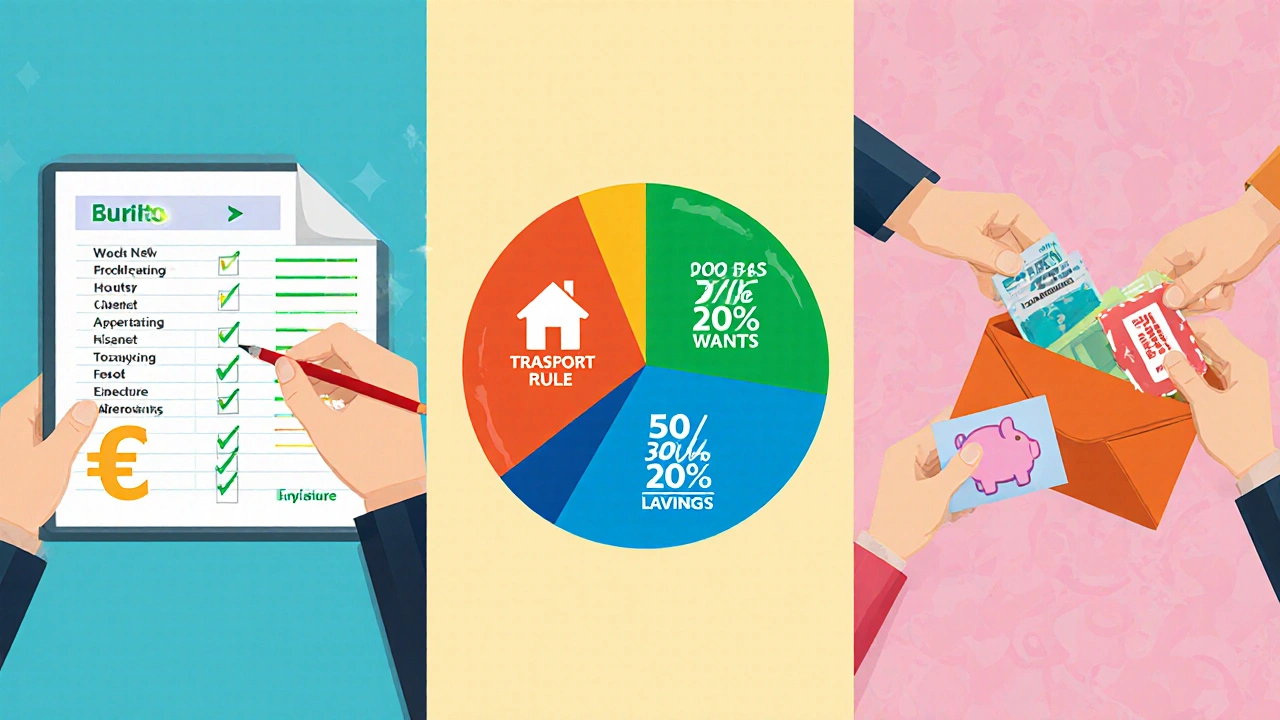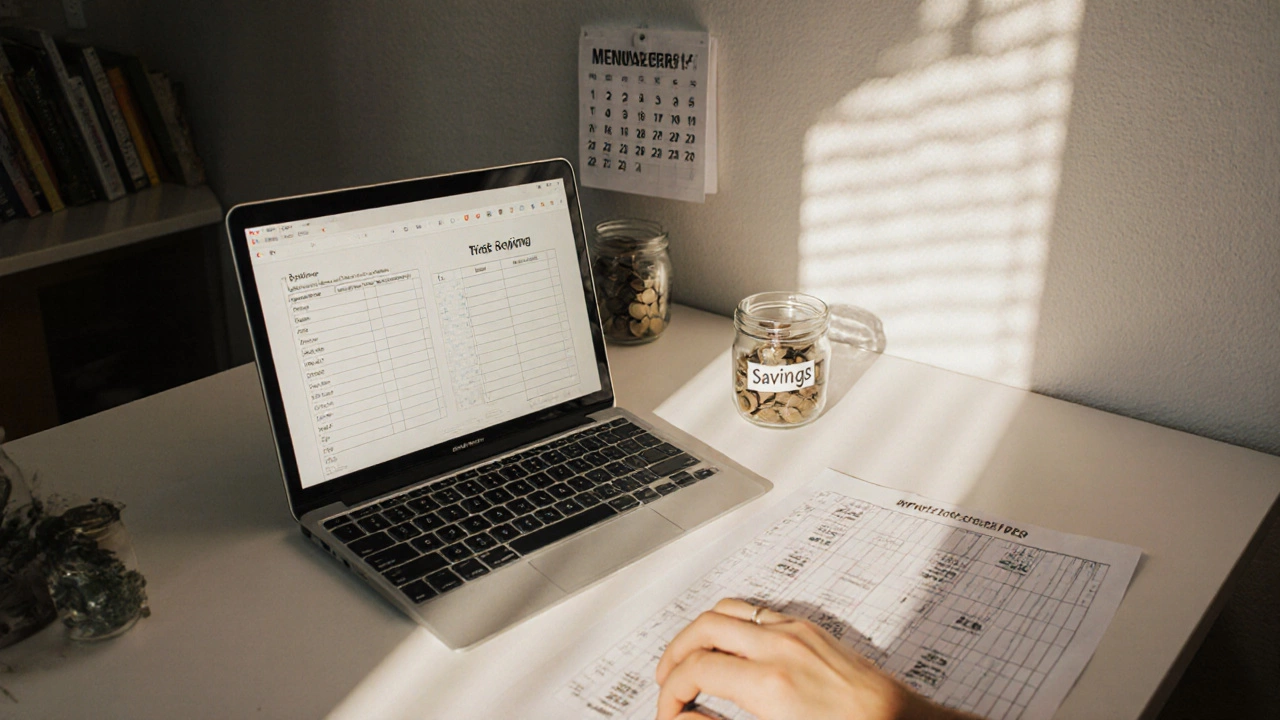50/30/20 Budget Calculator
How It Works
This tool applies the 50/30/20 rule recommended in the article. Allocate 50% of your income to needs, 30% to wants, and 20% to savings/debt.
Enter your monthly net income to see your ideal budget breakdown.
If you’ve ever stared at a bank statement and felt lost, you’re not alone. Getting a grip on your money doesn't have to be a nightmare. This guide walks you through the basics of budgeting for beginners so you can start saving without a finance degree.
What is Budgeting?
Budgeting is a process of planning how to allocate your income to cover expenses, savings, and financial goals. Think of it as a roadmap that tells your money where to go, instead of wondering where it went.
Core Principles Every Newbie Should Know
- Track every euro. If you don’t know where the money is coming from or going, you can’t control it.
- Separate needs from wants. Essentials like rent and groceries top the list; the rest are flexible.
- Set realistic goals. Whether it’s a vacation fund or an emergency cushion, clear goals guide your spending limits.
- Adjust regularly. Life changes, and so should your budget.
Beginner‑Friendly Budgeting Methods
There’s no one‑size‑fits‑all, but three methods dominate the starter‑kit world. Below is a quick side‑by‑side look.
| Method | How It Works | Best For | Key Drawback |
|---|---|---|---|
| Zero‑based budgeting | Every euro is assigned a job, so income minus expenses equals zero. | People who like detailed control and can stick to a plan. | Time‑intensive to set up each month. |
| 50/30/20 rule | Allocate 50% to needs, 30% to wants, 20% to savings or debt. | Those who prefer a quick, rule‑of‑thumb approach. | Less precise for irregular income. |
| Envelope system | Cash for each spending category is placed in separate envelopes. | People who respond well to physical limits. | Hard to use for digital‑only transactions. |

Step‑by‑Step: Build Your First Budget
- Gather your numbers. Pull recent pay slips, bank statements, and any recurring bills.
- List all income sources. Include salary, side‑gig earnings, freelance work, and any passive income.
- Identify fixed expenses. Rent/mortgage, utilities, insurance, loan payments - these rarely change month to month.
- Estimate variable expenses. Groceries, transport, entertainment - use the past three months to find an average.
- Set a savings target. Aim for at least 10% of net income if you can; adjust upward as you get comfortable.
- Choose a budgeting method. Pick one from the table above that matches your personality.
- Pick a tool. Spreadsheet, app, or paper envelope - we’ll cover options next.
- Monitor weekly. Compare actual spend to your plan and tweak as needed.
Tools & Templates to Make Life Easier
While pen‑and‑paper works, digital tools save time and reduce errors.
- Google Sheets: Free, cloud‑based spreadsheet with ready‑made budgeting templates. You can customize categories and view charts instantly.
- YNAB (You Need A Budget): Paid app that follows the zero‑based philosophy. Great for people who need prompts and community support.
- Mint: Free aggregator that pulls transactions from your banks, categorizes them, and offers alerts when you’re close to limits.
Pick the one that feels least daunting. For most beginners, a simple Google Sheet works wonders because you stay in control of the data.

Common Pitfalls and How to Dodge Them
- Over‑estimating income. Use net pay after taxes, not gross salary.
- Ignoring irregular costs. Include quarterly insurance, car maintenance, and holiday spending in a “sinking fund” column.
- Setting unrealistic limits. A budget that’s too tight leads to frustration and abandonment.
- Skipping the review. Money habits change; schedule a brief check‑in every Sunday.
Quick Checklist for Budgeting Newbies
- Collect all income and expense statements.
- Choose a budgeting method that matches your style.
- Set up a simple spreadsheet or download an app.
- Allocate every euro - even if it goes to a “miscellaneous” bucket.
- Review and adjust weekly for the first month.
- Celebrate small wins - hitting your savings target, paying off a credit card, etc.
What is the easiest budgeting method for absolute beginners?
The 50/30/20 rule is often recommended because it requires only three numbers and works for most income types.
How often should I update my budget?
Check it at least once a week. If you have a variable income, a daily glance can prevent surprises.
Can I budget without a spreadsheet?
Yes. The envelope system works with cash, and many free apps (like Mint) handle everything digitally.
What should I do about irregular expenses?
Create a “sinking fund” category. Divide the total cost of the irregular item by 12 and set aside that amount each month.
Is budgeting worth it if I earn a low salary?
Absolutely. Even small adjustments can free up money for emergencies or debt repayment, which improves financial stability.
